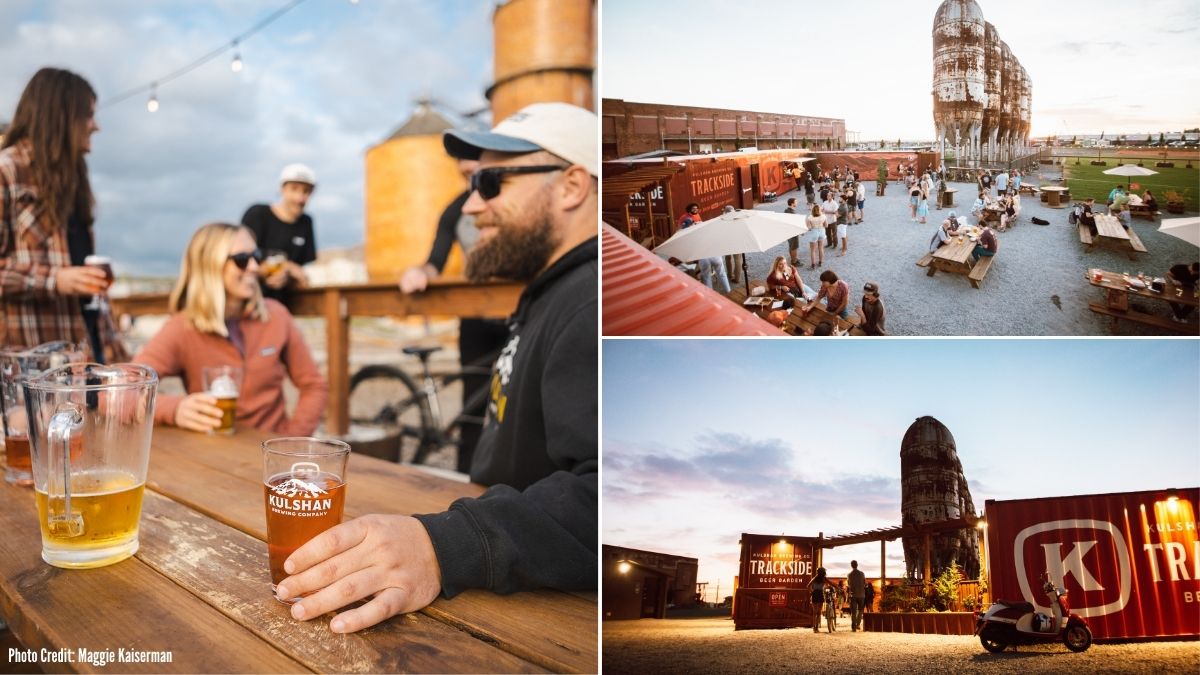The flower of the Humulus lupulus plant is a wondrous and beautiful thing. Commonly referred to as hops, these magnificent herbal gems stir passion in the hearts of beer lovers. But for brewers, hops are as much about process as they are passion.
There are dozens of hop varieties, and most craft beer aficionados swoon over their favorites. Regardless of the type, hops are available in the following four basic formats, and the format a brewer uses impacts the brewing process as well as the character of the beer.
Fresh Hops
Once harvested, the hop strobiles (cones) immediately begin to dry and lose their hoppy essence; therefore, they are immediately dried in a kiln to preserve their vital oils and acids. Some hops are intercepted by brewers for immediate use while still wet off the bine (hops grow on bines, not vines). Fresh hops, sometimes called wet hops, add a vibrant but delicate hop character: They are fruitier and spicier, but with a soft, less-bittering charm. Often, only a portion of the hops used in a fresh hop beer is actually fresh. Few beers are brewed using 100 percent fresh hops.
Reach for Double Mountain Brewery’s Killer Green or Bale Breaker Brewing Co.’s Piled High Imperial Fresh Hop.
Whole Cone Hops
After they are kiln-dried, the bud-like hops are packaged in airtight bags and kept in cold storage to slow their deterioration. In time, the cones break down into petals or, as they’re typically called, flowers. If properly babysat, they can last up to one year.
Brewing with whole cone hops presents challenges because they’re bulky and a bit messy, and can clog pumps and filters. Still, some brewers say that this most natural form of the hop yields the best expression of hop character. Most breweries choose a different tack, but Deschutes Brewery and Hop Valley Brewing Company are among the small number of breweries committed to using primarily whole cone hops.
Reach for Deschutes Brewery’s Inversion IPA or Hop Valley’s Alpha Centauri Imperial IPA.
Pellet Hops
Convenient and consistent, most of the craft beers that you love are brewed with pellet hops. The freshly dried hops are pulverized and extruded into little green chunks that look very much like rabbit food. They are packaged in airtight, nitrogen-flushed bags and can last up to three years.
Proponents of this kind of hop, which includes most professional brewers, assert that any loss of character is outweighed by the advantages—longevity, ease of use and consistency.
Reach for Ninkasi Brewing Company’s Total Domination IPA or Two Beers Brewing Co.’s Evo IPA.
Hop Extract
Once considered unmentionable in the world of craft beer, hop extracts have gained credibility in recent years, largely because of improvements in the extraction process. It’s exactly what it sounds like—the essential oils and acids are extracted from the hops and transformed into a highly condensed, molasses-like liquid.
For the brewery, it is an efficient way to add lots of hop character to stronger beers, which would otherwise require troublesome amounts of whole cone or pellet hops. For that reason, hop extract works especially well for super-hopped, high-alcohol beers like double and triple IPAs.
Reach for Holy Mountain Brewing’s Astral Projection Double IPA or Fremont Brewing’s The Brother Imperial IPA.






